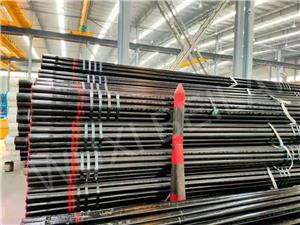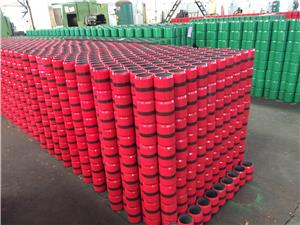Is there any standard for gas line pipe color and size?
Gas line pipes are primarily designed for the transportation of various gases, including natural gas and propane. Constructors typically distinguish the application of piping based on gas line pipe color and size. Today, gas line pipe experts from Bei Lai will provide you with a concise overview of what these colors and sizes signify.
Gas line pipe color were developed by the American National Standards Institute (ANSI) and the American Society of Mechanical Engineers (ASME) to help determine the contents of gas piping and its potential hazards in order to improve safety. For example, yellow pipework is reserved for flammable gases and acts as a warning in industrial environments.
Gas line pipe color plays a vital role in ensuring safety and efficiency in industrial environments. According to ASME A13.1, specific colours can indicate the type of fluid or gas being transported in the pipe. Below are the specific colours and what they represent:
- Yellow: flammable fluids and gases (e.g. natural gas, petrol)
- Orange: toxic or corrosive fluids (e.g. acids, caustics)
- Green: potable water supply lines
- Blue: compressed air or other gases
- Brown: flammable fluids (e.g. acids, corrosive liquids)
- Red: fire protection systems (e.g. fire sprinklers, fire hydrants)
- Purple: reclaimed or recycled water
- Grey: non-potable water supply lines
- White: steam condensate or other substances
- Black: other substances or products
Colour coded marking of gas pipe tubing minimises confusion and reduces the risk of accidents. So what are the factors that influence gas line pipe sizing? Factors affecting the choice of gas line pipe size include flow rate, material and temperature.
1.Flow rate
The flow rate of the gas is the main factor in determining gas line pipe size and is usually measured in cubic feet or metres per hour. The higher the flow rate, the larger the pipe diameter to maintain adequate gas flow; the lower the flow rate, the smaller the pipe diameter.
2.pipe materials
Different materials, such as steel, copper and various plastics, have unique properties that affect frictional resistance and pressure drop. For example, materials such as High Density Polyethylene (HDPE) and Polyvinyl Chloride (PVC) have smoother inner walls and therefore lower frictional resistance than other materials.
3.Temperature
The temperature of the gas and its surroundings affects gas density and flow characteristics. At high temperatures, it is necessary to adjust pipe design and sizing to ensure safe and efficient operation. Experienced construction workers can intuitively understand the basics of gas piping on site from the colour and size of the gas line pipe.
This is essential to avoid accidents and ensure safe operation of the gas distribution system. For more information, please do not hesitate to contact us!




